Fantasia 2018, Day 18, Part 1: Penguin Highway and The International Science-Fiction Short Film Showcase 2018
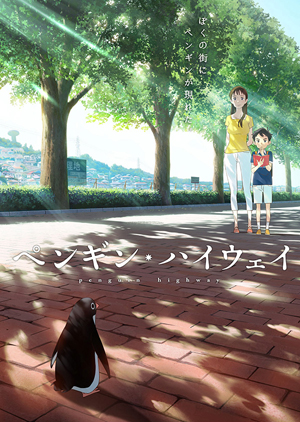 Sunday, July 29, was an intriguing day. Not so much because of the first movie I planned to see, an anime called Penguin Highway about a young boy investigating the mysterious appearance of penguins in his small Japanese town. But because of the second screening, the International Science-Fiction Short Film Showcase 2018. It’d present eight films, and having seen prior editions of the showcase, I knew how unpredictable it would be.
Sunday, July 29, was an intriguing day. Not so much because of the first movie I planned to see, an anime called Penguin Highway about a young boy investigating the mysterious appearance of penguins in his small Japanese town. But because of the second screening, the International Science-Fiction Short Film Showcase 2018. It’d present eight films, and having seen prior editions of the showcase, I knew how unpredictable it would be.
First, though, was Penguin Highway (ペンギン・ハイウェイ). It’s the first feature from director Hiroyasu Ishida. The script’s by Makoto Ueda, adapting a novel by Tomihiko Morimi (which is scheduled to appear soon in an English translation from Yen Press). Ueda also wrote the script for another animated adaptation of a Morimi novel, Night Is Short, Walk On Girl. This one’s quite different from that film, though.
It’s about a boy, Aoyama (voiced by Kana Kita), living in a village where penguins start to appear from no known source. Aoyama, a brilliant and scientifically-inclined child who writes down everything that happens to him in his notebooks along with all his thoughts and analyses, decides to solve the mystery of the penguins. Complicating things is his crush on a never-named adult woman (voice of Yu Aoi, who appeared in live-action in Tokyo Ghoul and Japanese Girls Never Die aka Haruko Azumi is Missing) and a classmate, Hamamoto (Megumi Han) who has a crush on Aoyama.
Penguin Highway begins by adding a bit of surrealism to everyday life, but appears unsure where to go from there. Probably the best thing in the film is its depiction of Aoyama, a charmingly arrogant fourth-grader who’s counting the days until he wins his Nobel Prize in some scientific field. He comes off as rigid and overly logical in a way that feels believable, with a self-assurance that’s refreshing and also credible given his intellect. Unfortunately, this rationality’s sometimes overplayed, notably later in the film when he tries to apply his scientific instincts to analysing love. (Are you surprised to hear that this doesn’t work?)
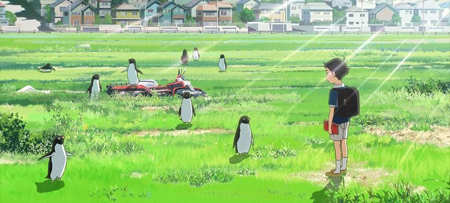 Also unfortunate: Aoyama stands out in part because the other characters aren’t individualised much at all. His crush-object’s known only as the Lady; she doesn’t even get a name, much less a coherent personality — even though she ends up being key to the mystery, in a heavy-handed piece of allegory. Hamamoto, on the other hand, is established as even smarter than Aoyama, which raises the question of why Aoyama’s starring in the movie when we could get along perfectly well with Hamomoto alone.
Also unfortunate: Aoyama stands out in part because the other characters aren’t individualised much at all. His crush-object’s known only as the Lady; she doesn’t even get a name, much less a coherent personality — even though she ends up being key to the mystery, in a heavy-handed piece of allegory. Hamamoto, on the other hand, is established as even smarter than Aoyama, which raises the question of why Aoyama’s starring in the movie when we could get along perfectly well with Hamomoto alone.
The elliptical nature of village existence as seen by a child comes across well. And the penguins, especially early on, make for a nice twist on daily life. The movie strains too much to bring the characters together, though. The conclusion seems to be aiming at a heart-warming reconciliation of rivals, but feels to me as though it’s glossing over bullying and other troubling behaviours far too easily. This is something of a peripheral point, admittedly; for better or worse, the focus of the film is not the village as a community. It’s on Aoyama and his love life, and this raises a few problems.
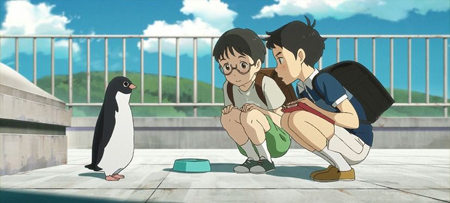 I can understand that it’s tricky to depict sexual impulses in a child, and tricky to interpret depictions across cultural mores; and it’s not as though Aoyama does anything particularly explicit. But he does have a highly-developed fixation on the Lady’s breasts. (Subtitles: “boobs.” Every time.) The Lady’s response to his interest in her is perhaps uncomfortably ambiguous; some lines near the end can be read as worse. Let me say that overall I didn’t think Aoyama’s relationship with the Lady was particularly credible or even interesting, and I think that’s a weakness in a movie that (as I interpret it) wants to be about its protagonist awakening to the Mystery of Love. I also think the film’s handling of romance generally is weak and often cliched. A discussion between Aoyama and his father in a restaurant hints at the use of an interesting symbol that would link the mystery of the film to love and sex, but doesn’t build on it; I wonder if in this instance the film’s not actually too reticent.
I can understand that it’s tricky to depict sexual impulses in a child, and tricky to interpret depictions across cultural mores; and it’s not as though Aoyama does anything particularly explicit. But he does have a highly-developed fixation on the Lady’s breasts. (Subtitles: “boobs.” Every time.) The Lady’s response to his interest in her is perhaps uncomfortably ambiguous; some lines near the end can be read as worse. Let me say that overall I didn’t think Aoyama’s relationship with the Lady was particularly credible or even interesting, and I think that’s a weakness in a movie that (as I interpret it) wants to be about its protagonist awakening to the Mystery of Love. I also think the film’s handling of romance generally is weak and often cliched. A discussion between Aoyama and his father in a restaurant hints at the use of an interesting symbol that would link the mystery of the film to love and sex, but doesn’t build on it; I wonder if in this instance the film’s not actually too reticent.
In any event, the mystery behind the penguins isn’t handled terribly smoothly. There’s a certain kind of surrealism to the sudden appearance of penguins, with which Aoyama’s rationalism is inherently in conflict; but the movie can’t figure out a way to negotiate these two things. We get a resolution in which much is explained, perhaps too much, and the explanations don’t work terribly well. There’s no particular reason I can see for the choice of penguins over other animals. Conversely there’s a science-fictional turn at the end that feels too clear and hence too facile.
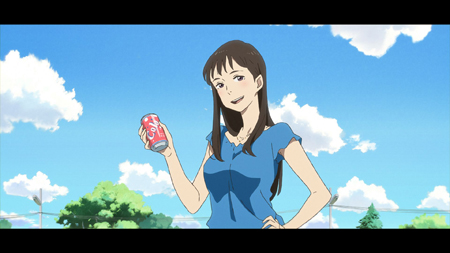 Almost as annoying is the fact that the penguins are surprisingly underplayed. Nobody seems to care about them except Aoyama, and the film goes penguinless for long stretches — which, given that the title’s drawing people to the film with the promise of cartoon penguins, feels like a missed opportunity at the least. The penguins do have their moments, which are animated in an endearing way; but too few. Otherwise the film’s mostly competent but uninteresting visually, until the conclusion finally provides some visual magic.
Almost as annoying is the fact that the penguins are surprisingly underplayed. Nobody seems to care about them except Aoyama, and the film goes penguinless for long stretches — which, given that the title’s drawing people to the film with the promise of cartoon penguins, feels like a missed opportunity at the least. The penguins do have their moments, which are animated in an endearing way; but too few. Otherwise the film’s mostly competent but uninteresting visually, until the conclusion finally provides some visual magic.
Penguin Highway is a decent film with some troubling aspects. It’s also a disappointment in terms of its underplayed presentation of its central mystery. It has an idea of what kind of film it wants to be, and what it wants to be about, but despite some clever moves in that direction, lapses into cliche far too often. And yet at the same time, it’s better than the foregoing makes it sound. There are some nice surreal moments, and it’s not too predictable. The conclusion is visually interesting, even if it doesn’t really wrap the film up in a wholly satisfying way. It’s a movie that does do some things right. Just, I feel, not enough.
Penguin Highway played the Hall Theatre; after it finished I headed across the street to the J. A. De Sève and settled in for the International Science Fiction Short Film Showcase 2018. First came “Be My Guest,” written and directed by Canadian David Jermyn. In a not-too-distant future, the gig economy’s been taken to its logical if disturbing concusion, as people can rent out their bodies for a set period of time to clients. One man, Tim (Zachary Bennett), rents himself out to clients who sleep with his girlfriend, Claire (Jessica Rose). The tensions this sets up build inevitably if a touch slowly. It’s an interesting mix of noir and science-fiction that in no way feels cyberpunk, perhaps because the characters are front and centre.
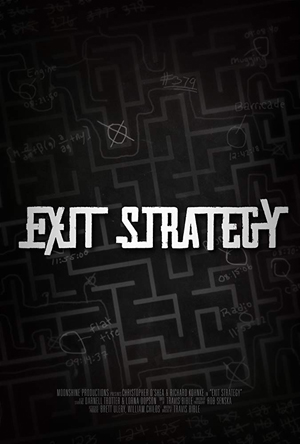 “Exit Strategy,” by American Travis Bible, was next. It begins in a diner where firefghter Matt (Richard Kohnke) is meeting his estranged scientist brother Shane (Christopher O’Shea) — who seems to have an odd knack for predicting things before they happen. He guides Matt to the scene of an emergency about to happen … or at least that’s what he says he’s doing. This is an excellent film, fast and clever, that plays about with the conventions of time-loop stories. It succeeds because it’s profoundly touching. It’s a story about family, and about what matters in life. It builds character supremely well and supremely efficiently, and benefits from very strong performances by both leads — they feel like brothers who don’t get along, and between them seem to sketch a lifetime of annoyance and misunderstanding and love.
“Exit Strategy,” by American Travis Bible, was next. It begins in a diner where firefghter Matt (Richard Kohnke) is meeting his estranged scientist brother Shane (Christopher O’Shea) — who seems to have an odd knack for predicting things before they happen. He guides Matt to the scene of an emergency about to happen … or at least that’s what he says he’s doing. This is an excellent film, fast and clever, that plays about with the conventions of time-loop stories. It succeeds because it’s profoundly touching. It’s a story about family, and about what matters in life. It builds character supremely well and supremely efficiently, and benefits from very strong performances by both leads — they feel like brothers who don’t get along, and between them seem to sketch a lifetime of annoyance and misunderstanding and love.
Next was “Spin,” from France. Written and directed by Leticia Belliccini, it follows a man (Johan Libéreau) wandering through a labyrinthine apartment building and at the same time through his personal timeline. His relationship with a woman (Armelle Gerbault) is central, as is an attack that begins the film and that recurs from different angles. The whole film plays out in a single extended shot, an inspired choice that makes the thing work: it’s dizzying following the man through the sequence of events shown out of all sequence. Libéreau’s acting helps, shifting emotions to match the time and angle on things we get, with the right level of blankness throughout. The colours and textured lighting give the film an eerie look, emphasised by the deserted feel of the building. The atmosphere’s excellent here, helping keep an audience involved even as they struggle to piece together the chronology. A fine ending with a strong twist caps off the film.
The American film “One Day the Sun Turned Black” was next, from writer-director Joe Lueben. It’s a mostly black-and-white film, with one memorable interlude in colour, and sparing with its dialogue. It’s tricky to fit the story together, but as I understand it, we follow a woman in a near-future world where the sun’s turned black and White people must apply a certain kind of pigment to survive, effectively becoming Black. We don’t get this at first, though, and it takes a while before understanding the relationship between the seemingly-Black lead and the older White man who stays indoors and avoids the sun.
In technical terms, this is an ambitious film. Unfortunately, I don’t think its central premise works. To start with, the visual difference between someone of recent predominantly-African descent and someone of recent predominantly-European descent may be more than hue (consider hair texture and the skeletal structure of the nose). That’s an issue in this specific case because it makes a relationship in the film difficult to parse. Beyond that, though, I’m struck by the ambiguity of the imagined future. On the one hand, a radio news show observes that the death toll’s higher in the US than other countries, presumably because racist Whites are reluctant to tint themselves. On the other hand, the movie also imagines a reason for Whites to wholly co-opt another facet of Blackness. It’s not an effective comment on current issues of identity and appropriation, I think, because I can’t find any contemporary equivalent to a plague forcing a choice between death or the appropriation of Blackness. The symbol collapses, in my viewing. There are heavy themes in this film, then, but I’m not sure they’re explored coherently.
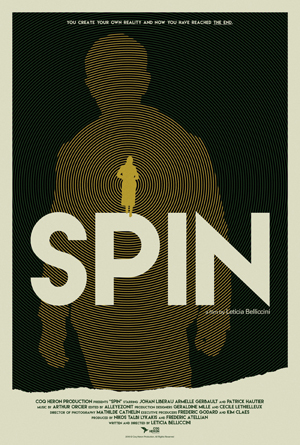 Another near-future dystopia was next: “Exhale,” from France (original title: “Expire”), directed by Magali Magistry from a script by Magistry and Chris Biggs. It follows a teenager, Juliette (Juliette Bettencourt), living alone in a world where the air has been turned to a toxic fog. We see her, dissatisfied with the solitary life, travel through the dangers of this world to be with a boy, Medhi (Yassine Douighi). This is a beautiful film, with stunning lighting. Reality’s sometimes not what it seems, as holograms are a feature of this depopulated future, and that’s worked for good effect. Unfortunately, the film ends up difficult to appreciate because it’s difficult to sympathise with the lead. A teen’s need for a social life is all well and good, but teen or not, the risk-reward factor for Juliette is out of whack. Worse, on the face of it there’s less sense in her going on a dangerous journey than there would have been in Medhi coming to her. A wonderful visual experience, then, but unsatisfying.
Another near-future dystopia was next: “Exhale,” from France (original title: “Expire”), directed by Magali Magistry from a script by Magistry and Chris Biggs. It follows a teenager, Juliette (Juliette Bettencourt), living alone in a world where the air has been turned to a toxic fog. We see her, dissatisfied with the solitary life, travel through the dangers of this world to be with a boy, Medhi (Yassine Douighi). This is a beautiful film, with stunning lighting. Reality’s sometimes not what it seems, as holograms are a feature of this depopulated future, and that’s worked for good effect. Unfortunately, the film ends up difficult to appreciate because it’s difficult to sympathise with the lead. A teen’s need for a social life is all well and good, but teen or not, the risk-reward factor for Juliette is out of whack. Worse, on the face of it there’s less sense in her going on a dangerous journey than there would have been in Medhi coming to her. A wonderful visual experience, then, but unsatisfying.
American Andrea Ashton’s “Greater Good” was next. Written by Candace Little and Allison Yuen, it’s the story of a pregnant woman (Miranda Plant) who answers her doorbell to find an agent of the Department of Alternate Timelines on her doorstep, and along with the woman from the future is an adult version of her daughter-to-be (Lauren Kneteman), who will be guilty of a terrible atrocity. The agent (Anneliese Lee-Reid) politely informs her of a few of the facts of the case, and requests she take action to prevent it. The movie was made in 72 hours as part of the Women’s Weekend Film Challenge in January this year; it’s got a thought-provoking premise, but it’s a bit underdeveloped, leaving a viewer with too many practical questions about why the future police went about things the exact way they did. The acting’s variable, but Plant in particular gets her character’s confusion and uncertainty and mix of emotions across.
Then came “The Flapping of the Hummingbird” (according to the Fantasia web site; I recorded the English title shown onscreen as “The Hummingbird Flutters,” while in any event the original title is “El aleteo del colibrí”). It’s a Spanish film, directed and written by Meritxell A. Valls. It’s a moody story about a man (Adrià Collado) analysing the choices that bring him to a certain point in his life, and considering what would have happened in an alternate timeline. It’s a nice film, moody and well-acted, albeit not really science-fiction. It’s structured tightly, and gets across much of a substance of a man’s life in 12 minutes; but the ending gives it a shaggy-dog feeling nevertheless, undercutting much of what we’ve seen.
“They Wait For Us,” from the UK, concluded the screening. Directed by Lukas Schrank and George Thomson, and written by Schrank and Thomson with Matthew Jankes, it follows a care worker at a future end-of-life hospice (Chike Chan) who believes one of the patients in a coma (Josephine Larsen), supposedly brain dead, is psychically communicating with him. He fights to have her revived — but is he right? It’s a supremely well-shot film, but I found myself unsure what broader theme it was getting at. It looks spectacular, but to me is elusive, despite the Miltonic quotation that features prominently.
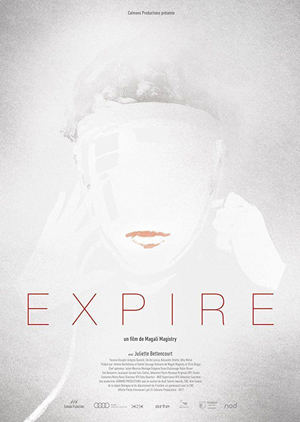 After the films, there was a question-and-answer session with five of the directors (as always, the write-up that follows comes from handwritten notes, and should be regarded as extremely fallible). Each was asked to name the inspiration for their films. Joe Lueben, who made “One Day the Sun Turned Black,” said his movie began by wondering about the basic question of what would happen if White people had to pigment themselves to survive. Leticia Belliccini, creator of “Spin,” briefly mentioned the unity of time and the way of using space before stating she was a fan of Kafka and Lynch, as well as bande dessinée creator Gaspar Noé. One of the directors of “They Wait For Us” (I did not catch which one was present) said that they worked with a doctor named Adrian Owen and researched the care of coma patients and the bureaucratic process to determine if someone was alive or dead; the filmmaker spoke about his mother-in-saw suffering a brain tumour and describing the sensation as being locked entirely inside one’s head.
After the films, there was a question-and-answer session with five of the directors (as always, the write-up that follows comes from handwritten notes, and should be regarded as extremely fallible). Each was asked to name the inspiration for their films. Joe Lueben, who made “One Day the Sun Turned Black,” said his movie began by wondering about the basic question of what would happen if White people had to pigment themselves to survive. Leticia Belliccini, creator of “Spin,” briefly mentioned the unity of time and the way of using space before stating she was a fan of Kafka and Lynch, as well as bande dessinée creator Gaspar Noé. One of the directors of “They Wait For Us” (I did not catch which one was present) said that they worked with a doctor named Adrian Owen and researched the care of coma patients and the bureaucratic process to determine if someone was alive or dead; the filmmaker spoke about his mother-in-saw suffering a brain tumour and describing the sensation as being locked entirely inside one’s head.
David Jermyn of “Be My Guest” said he was interested in the concept of the machine in his film, and in making a science-fiction film without aliens or explosions. Andrea Ashton of “Greater Good” spoke about the pressures the 72-hour challenge brought, such as finding a way to use a pregnant actress and two other actresses. They were assigned a genre at the last minute as part of the challenge. She mentioned being afraid as a mother that her child might turn out to not be a good person, and said that they only decided on the ending at the last moment.
Belliccini was asked about the location she used in her film, and she said it was an actual place, Les Espaces d’Abraxas, in Paris, designed by architect Ricardo Bofill. There was an issue with the permits, and the film became one shot only when the location was confirmed. Ashton was asked about the choices made in her film, and she said that it originally had a longer script, but a lot of dialogue was cut. She’s been approached about making it bigger and more fleshed-out. She’d like to think about it, and about the daughter’s perspective. She noted there are a lot of complexities to time travel, and a lot of ways to work out a problem once time travel becomes possible; but in the 72-hour film there was only so much she could do.
Lueben was then asked a number of questions. He said he got feedback from other writers, including writers of colour, and observed that anytime you deal with questions of identity toes are going to be stepped on. He noted that the story from a student that had inspired the film was written in 2016, with White identity much in the news. He decided to tell a story in which some in America would rather die than pigment themselves. He did try to avoid caricatures, even though he thinks the father made the wrong choice. He concluded by noting that he didn’t set out to make a statement, but a film.
That ended the questions, and I hurried across the street, arriving in time to catch what turned out to be one of the pleasant surprises of the festival.
Find the rest of my Fantasia coverage here!
Matthew David Surridge is the author of “The Word of Azrael,” from Black Gate 14. You can buy his first collection of essays, looking at some fantasy novels of the twenty-first century, here. His second collection, looking at some fantasy from the twentieth century, is here. You can find him on Facebook, or follow his Twitter account, Fell_Gard.